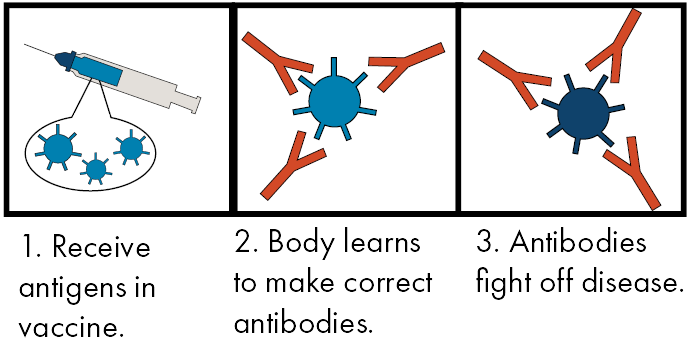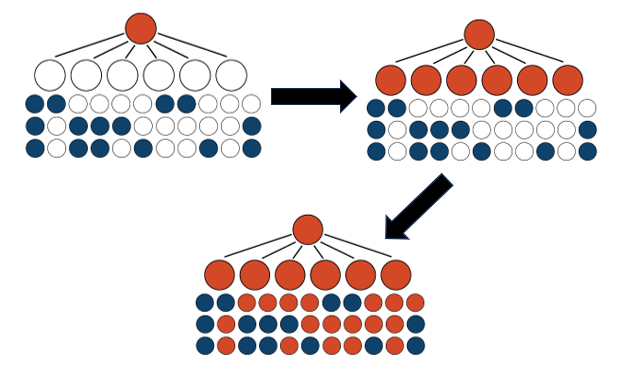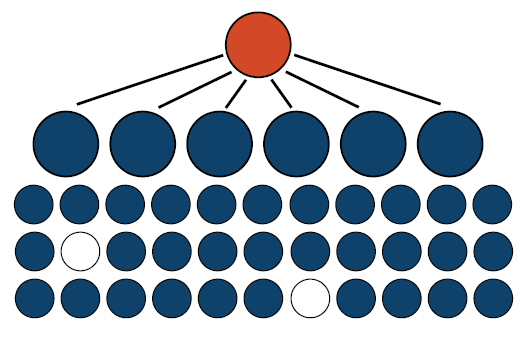Recommendations
Stay informed and up to date on recommended immunizations. Talk to a trusted health care professional if you have questions.
Learn More About Vaccine Preventable Diseases
Find help with costs. Get immunization records and more.
- CLICK the buttons below to find details about the Vaccines for Children program, accessing immunization records, vaccines for traveling outside the U.S. and other resources.
Immunization FAQs
How do vaccines work?
The way our bodies fend off disease is by making antibodies. These antibodies are specific to each disease. While we’re sick, our bodies are working to figure out how to make the correct antibodies to fend off what’s making us sick. So, if you have a cold and your nose is running and you’ve got a cough, that’s what’s going on – your body’s immune system is responding to the bacteria or virus and working to create antibodies to get rid of that bacteria or virus.
Most vaccines have these active ingredients in them called antigens. An antigen is just something that causes your immune system to create antibodies, so bacteria or viruses are also antigens. Antigens in vaccines mimic or are made from certain viruses or bacteria so that when the vaccine antigens enter your body, your immune system learns how to fight off these viruses and bacteria without you having to become sick.

Learn More:
Explaining How Vaccines Work | CDC
Are vaccines safe?
The antigens in vaccines can be made of 1 of 3 things.
- The first is killed or weakened viruses or bacteria (live, attenuated vaccine examples: MMR, varicella/chickenpox, rotavirus). If it’s made from a killed virus, then that virus can’t actually do any harm to you. But because it’s foreign to your body, your immune system is still going to respond by creating the correct antigens. And if it’s made from a weakened virus, that virus has been weakened enough so that you won’t actually get sick and your body can easily fight it off.
- The second thing vaccine antigens can be made of is parts of the genetic or surface material of viruses or bacteria (subunit vaccine examples: Hib, hep B, HPV). If this is the case, since it’s made from the viruses and bacteria, your body learns what antibodies to make. But it’s not made from a whole virus so it won’t harm you.
- Finally, vaccine antigens can also be made from a bacterial toxin that scientists have made nontoxic (whole-cell inactivated vaccine examples: polio, tetanus, pertussis/whooping cough, hep A). So again, the bacteria has been disarmed – like the weakened bacteria and viruses – and won’t harm you, but your body’s immune system will still react as if it can.
Vaccines have to pass lots of testing in order to be approved and recommended.
You can find more on general vaccine safety, safety of individual vaccines and adverse effect reporting here.
Learn More:
Vaccine Types | NIAID: National Institute of Allergy and Infectious Diseases (nih.gov)
What is community immunity?
You may have heard the term “herd immunity.” “Herd immunity” is just another term for “community immunity.”
The idea behind community immunity is that if enough people are immune to, or protected against, a disease, then that disease will not spread through a community. This means that the entire community will be protected from that disease. Basically, it’s getting rid of a disease and/or stopping the spread of a disease in a community because such a high number of people in that community can’t get that disease.
So, for example, if each sick person spreads a disease to six more people, you can see how that disease will quickly spread until a ton of people are sick.

But if most people are immune, or won’t get sick, then they’re not spreading the disease.

A big reason people won’t catch certain diseases is because of vaccines. Otherwise, to become immune, you’d have to get sick first. And just because these diseases aren’t as widespread as they once were doesn’t mean they’re completely gone. After all, there are over 8 billion people in the world and not everyone has had access to vaccines.
Plus, due to age, underlying medical conditions, and undergoing some treatments, a fairly large number of people can’t get vaccines. So, the only way they’re protected by community immunity is if those who can get vaccines, get vaccines.
Learn more:
Vaccine Glossary of Terms | CDC
Vaccines Protect Your Community | HHS.gov
Community Immunity | NIH News in Health
What if I don't have insurance that covers vaccines?
Vaccines for Children
The Vaccines for Children (VFC) program is a federally funded program that provides low to no cost vaccines to children under 18 years old who are uninsured, underinsured, Medicaid eligible, American Indian or Alaskan Native. VFC limits vaccine administration fees and does not allow participating sites to charge eligible patients for the vaccine. VFC covers all vaccines routinely recommended for children through 18 years. For more information about whether you qualify to receive VFC vaccines or if you are concerned with affording any remaining administration fees, talk to a participating health care provider.
Learn more about VFC here.
Vaccines for Adults
The Vaccines for Adults (VFA) program provides select vaccines at little to no cost to adults 19 years and older who are either uninsured or underinsured. VFA limits vaccine administration fees and does not allow sites to charge eligible patients for the vaccine. Vaccines covered by VFA program Hepatitis A, Hepatitis B, COVID-19, Human Papillomavirus (HPV), Influenza, Mengincoccoal, Measles, mumps, rubella (MMR), Pneumococcal and Tetanus, diphtheria and pertussis. For more information about whether you qualify to receive VFA vaccines or if you are concerned about affording any remaining administration fees, talk to a participating health care provider.
Learn more about VFA here.
Adults 18 years and older without health insurance and adults whose health insurance does not cover all COVID-19 vaccine costs can get updated COVID-19 vaccines at no cost through the Federal Bridge Access Program. Additional health care providers not listed on the map below may have vaccine available. For help locating a participating provider visit Vaccines.gov.
What diseases do vaccines protect against?
Routine immunizations in the U.S. protect against the following diseases:
- Chickenpox
- COVID-19
- Diphtheria
- Flu
- Hepatitis A
- Hib
- HPV (Human Papillomavirus)
- Measles
- Meningococcal
- Mumps
- Hepatitis B
- Pertussis
- Polio
- Rotavirus
- RSV
- Rubella
- Shingles
- Tetanus
If travelling out of the country, talk to your health care provider about additional necessary immunizations.
Contact Us
To contact the Immunization Unit, call (701) 328-3386 or toll-free (800) 472-2180 or email vaccine@nd.gov.






